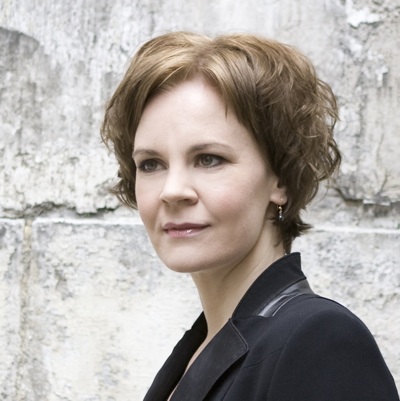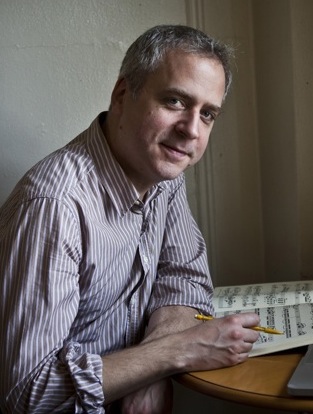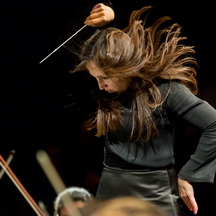Denk does Béla – a sensitive reading
After days of turkey and pumpkin and fullness and family, Davies Symphony Hall was nearly sold out for a concert of good-natured music. Led by visiting Swedish conductor Susanna Mälkki, the San Francisco Symphony was gloriously responsive in the first half but more pedestrian in the second.
 In its November 29 concert of Bartók and Brahms, the audience stood twice to give ovations, although the critics were more restrained. Which raises an interesting question: who to believe when critics and audience are at odds? On the popular movie info web site, Rotten Tomatoes, each is separately scored. Recently my family voted to check out a delicious bit of noir – mirroring the popular response – despite a lowscore from the critics, and we were surprised by how “wrong” the critics could be. In Davies Hall, as I saw patrons stand and cheer on all sides, I wondered if it is too easy to focus on leaves and overlook a forest of bonhomie and the glow of giving thanks.
In its November 29 concert of Bartók and Brahms, the audience stood twice to give ovations, although the critics were more restrained. Which raises an interesting question: who to believe when critics and audience are at odds? On the popular movie info web site, Rotten Tomatoes, each is separately scored. Recently my family voted to check out a delicious bit of noir – mirroring the popular response – despite a lowscore from the critics, and we were surprised by how “wrong” the critics could be. In Davies Hall, as I saw patrons stand and cheer on all sides, I wondered if it is too easy to focus on leaves and overlook a forest of bonhomie and the glow of giving thanks.
The concert began with The White Peacock, a short work written in 1925 by little-known composer Charles Griffes that followed the steps of Debussy through a dance of exaggerated colors and exotic scales. Oboes entered followed by flutes in phrases that floated in a mesh of spangle-y strings. Then torrid phrases in the strings brought out the strutting and solemn self-regard of a peacock. In this clever and exposed piece the Symphony followed Mälkki’s every suggestion, a fine mating of intent and execution.
Written at the end of his life in 1945, Béla Bartók’s Concerto No. 3 for Piano and Orchestra celebrated his love for his second wife and former student, Ditta Bartók. Starring Jeremy Denk, a daring pianist and equally formidable writer whose articles on music have appeared in The New Yorker, this was Bartók at his most ebullient.
While some star pianists might have approached with chiseled notes and fiery runs, Denk showed restraint, poise, and even mercy. He flickered through the audacious bits without trumpeting about it, and portrayed Bartók’s glowing themes with appropriate warmth, not the pugilism of his first two piano concertos. This was no easy task: it takes a surrender of ego to deliver the notes and not the performer, and thence to render the complex undercurrents and secretive bird calls strewn about this marvelous work.
Personally, I wanted more ego-driven star and less selfless vessel.
 But then in the Adagio religioso Denk was hugely present and mysteriously simple, crafting the movement as prayer. That long middle movement built from wind fragments and string tremolos into a confusing caucus, like the busy chirps that presage the dawn. Bartók spent years travelling the back roads of Hungary, Rumania and Turkey to record native melodies and further the infant science of ethnomusicology. Perhaps it was a natural step to transcribing the calls of the oriole and towhee.
But then in the Adagio religioso Denk was hugely present and mysteriously simple, crafting the movement as prayer. That long middle movement built from wind fragments and string tremolos into a confusing caucus, like the busy chirps that presage the dawn. Bartók spent years travelling the back roads of Hungary, Rumania and Turkey to record native melodies and further the infant science of ethnomusicology. Perhaps it was a natural step to transcribing the calls of the oriole and towhee.
The concerto was more “Bartókian” in the final movement, as was Denk, with sweeping statements and urban edge – there is something of concrete and glass here, of modernism and the growl of traffic, and the hopes and hardness of life’s corners.
After a fiery mad dash up the keyboard, the audience stood to applaud, and I recalled that Bartók died before he could write the last 17 bars, but whispered those measures to his friend Serly, who filled in the score.
Readers of the Piedmont Post may recognize Dent as the director of last summer’s Ojai Festival North and the librettist of a comic opera on music theory, The Classical Style, which premiered at Ojai and at UC Berkeley. Those curious about his approach would enjoy, “Every Good Boy Does Fine,” Denk’s New Yorker essay on his life and music, or his popular online blog, “Think Denk.”
And the second half? Without the focus that a soloist provides, Mälkki struggled to fine-tune the tempos in Brahms’ Symphony No. 2 in D-Major. Perhaps the orchestra was complacent for the easier Brahms, or tired, or had difficulty interpreting their guest conductor. The result could have been lean and edgy and heartfelt and instead it was warm and fuzzy. And the audience loved that!
Go figure.
—Adam Broner
Photo top of Susanna Mälkki, from a photo by Simon Fowler; below, Jeremy Denk, photo courtesy of the SF Symphony.
